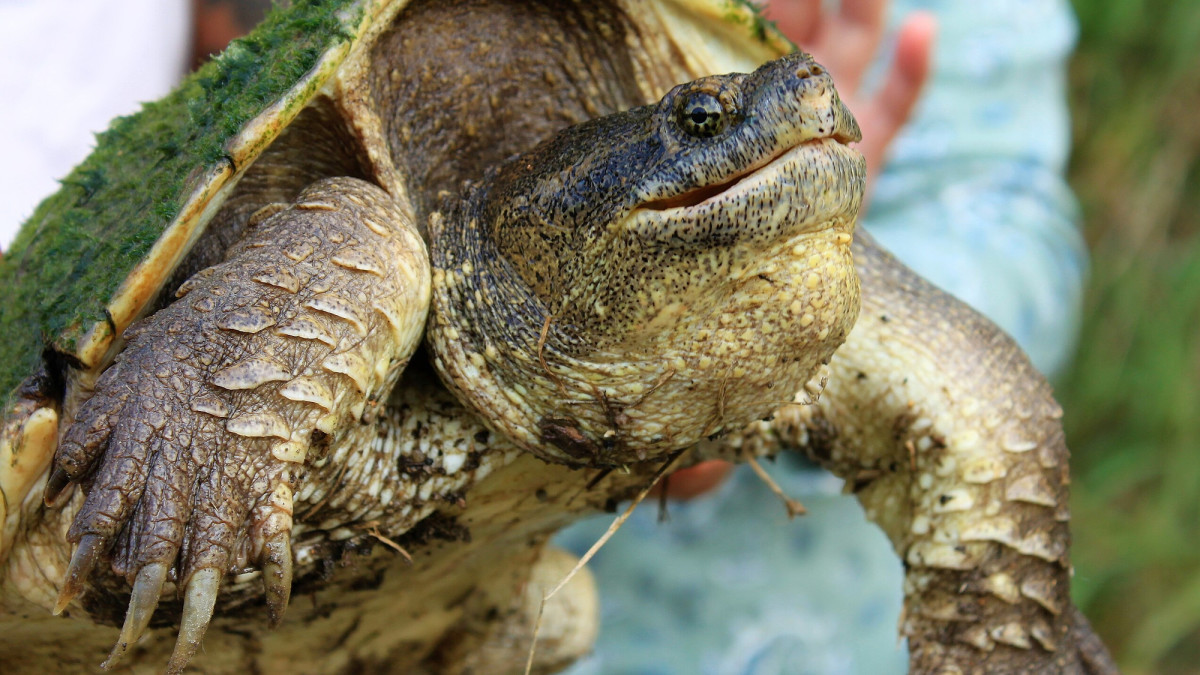
Can You Release a Pet Snapping Turtle Into the Wild?
Photo by Chitrapa, CC BY-SA 4.0, via Wikimedia Commons
Can I Release My Adult Snapping Turtle Where I Found Him?
“I read the article on PetHelpful about releasing pet turtles into the wild. I have a turtle, and I have done literally everything that the author did with her turtle. My turtle, Chompa, was hatched in my room as an egg.
Chompa is from the Charles River in Boston, Massachusetts. He is four years old. I keep him in a kiddie pool with two penguin water filtration systems, a UV light, heat bulb, and two electric water heater tubes (constant temp of 55-85°F).
We went through all three stages of Fluker pellet feeding—at the adult stage now—along with breeder fish every 6 months, about 20 breeders at a time. He gets dried river shrimp as a treat one to two times a month, and his shell is 12 x 12 inches.
I live next to the Charles River. I feel as though I may have been selfish with Chompa by not releasing him, and yet tears stream down my face when I try to even process this thought. I want only the best for him.
So, my question is this: Can I release a four-year-old common snapping turtle into the exact spot I found him on a shoreline near a dug-out clutch of eggs eaten by a fox?”—Michael
Releasing a Native Turtle Is Possible
Since Chompa is a native species and you do not have other turtles, I do not see the chance of him spreading any other diseases, and he is not going to be invasive. Those are the main reasons that turtles should not be released into the wild.
Will He Survive?
What I cannot tell you, however, and what no one can guarantee, is how he is going to do if you do release him. There is some data about the survival rate of sea turtles after injury and rehabilitation, but no research I am aware of on the survival rate after the release of snapping turtles.
We can only go on some anecdotal reports of what happens when most wild animals who have been raised in a domestic situation do when back in the wild. Since he was raised in an environment in which he did not have to compete for food, I do not think he would have a good chance of survival if he had just been released. The author of that article you read denies that, but she has no way of knowing that her turtle is going to survive.
You May Need to Release Him Slowly
If you do have to release Chompa, the only way that you can probably do that is by making some sort of enclosure by the side of the river and visiting and feeding him a few times a week. I know that does not sound very practical, but it is the only way raptor rehabilitation workers are able to release wild birds after they have been in captivity. If done in this way, less than 3% of the birds will die. (1) If the birds are not released slowly and fed during the interim, they die more frequently.
Turtles Can Live Well in Captivity
At this point, I am not even sure why you want to release him. Is he now too large to live in your home? If you can still keep him, I would certainly suggest it. I think some wild animals do much better in their normal habitat, but there is certainly nothing wrong with keeping a snake or a turtle in an enclosure.
Sources
- Duke G.E., Redig P.T. & Jones W. (1981) Recoveries and resightings of released rehabilitated raptors. Raptor Research, 15, 97-107. https://www.conservationevidence.com/individual-study/3353
This article is not meant to substitute for diagnosis, prognosis, treatment, prescription, or formal and individualized advice from your veterinarian. Animals exhibiting signs and symptoms of distress should be seen by a veterinarian immediately.
© 2024 Mark dos Anjos, DVM


